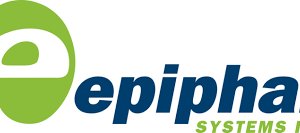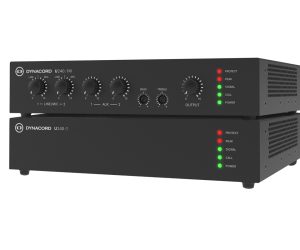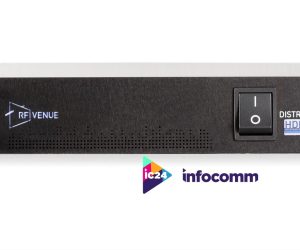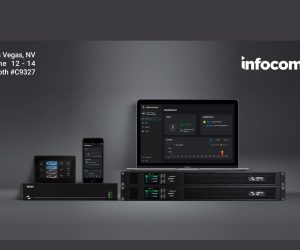
Standards – Who Needs Them?
Why on Earth should the AV industry bother with standards?
Text:\ Peter Swanson, CTS
Ah, the unbridled freedom of designing and installing systems in a standards-free world. Nothing to stand between you and your best practice knowledge of the industry; nothing to reign in the client’s expectations, nothing to constrain your design genius!
In many ways, a world free of standards should be utopian. Each project would deliver precisely what the client required. Sadly, the truth is rather different. In an industry without standards, it’s hard to quantify why one offering may be better than another. It’s also challenging to determine whether reasonable expectations have been met and whether the end outcome is ‘fit for purpose’. Understandably, market forces have led to standards being developed in key areas first – for example in the safe and effective delivery of electricity, water, gas and other services to buildings. If the success of an AV installation was literally a matter of life or death, we would have had many standards in place governing the performance of installed systems long before now. Instead, AV installations are only metaphorically a matter of life or death. Think of the videoconference system that fails just prior to the CEO’s most important call, or the audio system that is desperately being configured to achieve ‘just enough’ gain before feedback immediately before the band starts or the keynote speaker makes their main address.
THE IDEALISTS’ VIEW
When younger and more starry-eyed, I thought that it was quite a good thing to be working in an industry with such freedom to design to the best of your abilities. However, over time I have realised that this very unrestricted freedom contributes to a number of key issues. Many in our industry face these issues on a regular basis, including poorly defined briefs, unclear expectations of time and cost, mismanaged implementation and continual re-visiting/re-working of projects long thought to be complete.
Those with experience in other industries – such as our increasingly-close cousin the IT industry – can vouch for the many standards and processes that are in place for project delivery. These standards and processes help people get on with doing the job at hand, rather than inventing yet another circular device for motion efficiency. [There’s actually a lot to be said for icosagonal wheels; but not for use on tea trolleys – Ed].
Companies in our industry have been developing internal standards and processes for many years. This is a clear indication that these things are beneficial to business, as few companies will expend any effort on something that doesn’t ultimately benefit the bottom line. It’s now past time that our industry catches up and puts together a framework. We can then develop our own company processes in the knowledge that they dovetail with industry standards designed to enable more efficient project delivery and better outcomes for our clients. And in rides InfoComm as the champion to our rescue! Over the past 18–24 months, InfoComm has been establishing itself as a recognised Standards Development Organisation (SDO) with ANSI and for the past 12-18 months has been developing a suite of initial standards to help support our industry. The first of these, ANSI/InfoComm 1M:2009 – Audio Coverage Uniformity was officially released earlier this year. This was closely followed by InfoComm 2M:2009 Audiovisual Systems Design and Coordination Components, which has recently finished the public comment round and will now be updated for final approval and release. Also in the wings are standards relating to lighting for videoconference use and projected images.
AV AS SHE IS SPOKEN
The current draft standard focuses on putting in place a framework for communicating to other members of the project team, the design, coordination and documentation activities relating to AV. The goal of this framework is to guide a project successfully from initial briefing to final handover of systems and As-Built documentation. Project team members are identified as typically including architects, builders, services engineers and other construction industry professionals.
Those of you who work for an integrator or consultant may well recognise a number of your own company’s processes in the text of the standard. For those that don’t have processes in place already, hopefully a read of the draft will give you some great ideas on how to more effectively and efficiently guide your projects (and clients) from start to finish. The approach is very much that of a process standard (similar to ISO9001). This means that the standard does not tell you exactly what to do at all times, but rather is sufficiently open that existing company processes can continue to be used. Company processes would potentially be accepted as proof of compliance with the standard provided that all of the relevant activities in the standard are met in the project’s delivery.
The draft standard covers each typical phase of a major project, being Initial Planning, Briefing/Concept Design, Design and Coordination, Documentation and Construction Phase. The standard is written to enable use in a consultant-led or design and construct situation and is also intended to achieve flexibility/scalability for use on projects of various sizes.
The typical deliverables for each stage are described, both in terms of their format and extent of presentation and explanation as to their intent as part of the design and coordination process.
A proposed checklist/schedule is included for use as the basis for tracking project compliance. There have been discussions about how onerous it might be to keep this up to date on a day-to-day basis. However, most people have so far commented that the standard has great potential to assist in guiding projects and facilitating sign-off as each key task is completed.
STANDING UP TO BE COUNTED
While the comment period for the draft standard has now closed, you can still download a copy of the draft at www.infocomm.org/standards
if you’d like to get a more detailed understanding of the structure and extent of the draft.
At a broader level, the sheer energy that has been devoted by many people around the world is testament to the understanding that standards are important to our industry. This is something we all need to work together to achieve for our industry’s betterment – and the benefit of our own companies. As well as the nearly 100 volunteers directly involved in current standards working groups or committees, a register of over 200 has been gathered from around the world by InfoComm, ready to assist with future standards. InfoComm has been at pains to ensure that there is as much international representation as possible on the various working groups. Indeed, Australia’s own Jonathan Rutledge is currently part of the new Systems Energy Management working group. This group has been tasked with developing a standard to help guide the many good Green intentions in the marketplace.
While it might sound like a dry topic at first reading, I can highly recommend participating in a standards working group. Not only do you get the chance to have your say in the standards that will become the guiding principles for our industry, you can also test your knowledge through debate and discussion with other industry professionals. If you’re interested in getting involved, send an email to standards@infocomm.org with a short explanation regarding your industry background and areas of interest.















RESPONSES